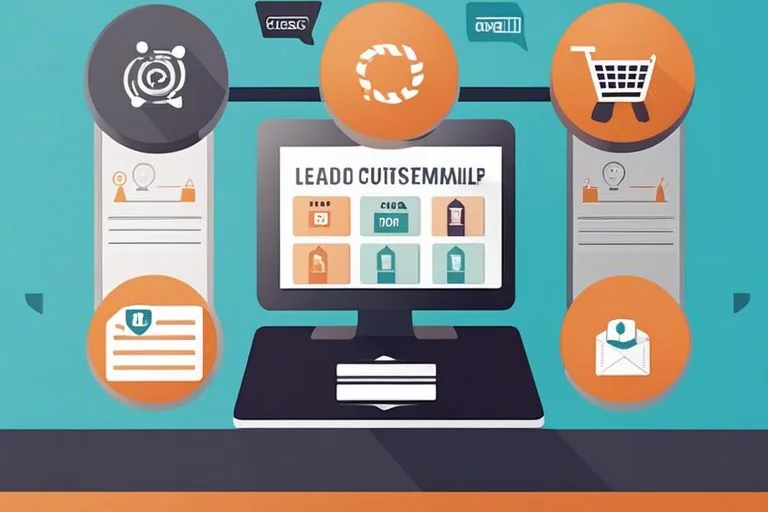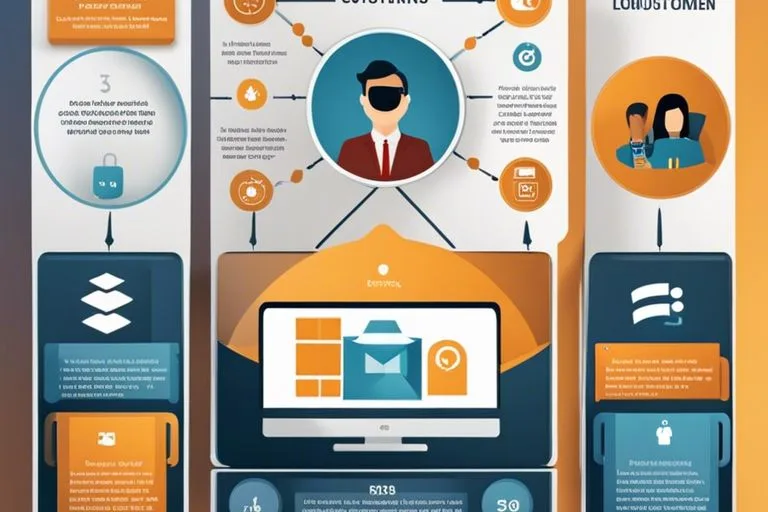Turning Leads Into Customers – Effective Follow-Up And Email Automation
There’s no denying the pivotal role effective follow-up and email automation play in converting potential leads into loyal customers. In this blog post, we investigate into the importance of timely and personalized responses, nurturing leads through strategic communication, and leveraging automation tools to streamline the process. Discover how top-performing businesses utilize these tactics to increase conversion rates and drive revenue.
Looking for product reviews? Check out our reviews on ASICS Gel-Excite 10 Running Shoes and DUOYANGJIASHA Women’s Casual Sneakers to make informed purchasing decisions.
Key Takeaways:
- Timely follow-up: Promptly following up with leads can significantly increase the chances of converting them into customers. It’s crucial to strike while the iron is hot and keep the conversation going.
- Personalization is key: Tailoring your follow-up messages to each lead’s specific needs and interests can help build rapport and trust. Automated emails can be personalized with the use of dynamic content and segmentation.
- Effective email automation: Implementing email automation tools can help streamline the follow-up process and ensure that leads receive relevant and timely information. Setting up drip campaigns and automated workflows can nurture leads into taking the desired action.
Understanding the Sales Funnel
Clearly understanding the sales funnel is crucial for effectively converting leads into customers. The sales funnel represents the journey a potential customer takes from being aware of your product or service to making a purchase. It consists of different stages that require tailored strategies to guide prospects towards the final sale.
Stages of the Sales Funnel
Funnel: The stages of the sales funnel typically include awareness, interest, decision, and action. At the awareness stage, prospects become familiar with your brand. The interest stage is where leads show curiosity in your offerings. The decision stage is critical, where potential customers evaluate and compare before making a purchase. Finally, the action stage is where the conversion happens, and a lead becomes a customer.
Crafting Your Message for Each Stage
On crafting your message for each stage, it’s imperative to understand the specific needs and concerns of your audience at that point in the buying process. Tailoring your content and communication to address these needs can significantly impact your conversion rates. For example, at the awareness stage, your message should focus on educating and creating brand awareness, while at the decision stage, it should emphasize the unique selling points and benefits of your product or service.
Sales: It’s crucial to align your message with the mindset of leads at each stage and provide them with the information they need to move forward in the funnel. By crafting targeted messages that resonate with your audience, you can nurture relationships and guide prospects towards becoming loyal customers.

Effective Follow-Up Strategies
Timing Your Follow-Ups
Your follow-up timing is crucial when turning leads into customers. It is important to strike the right balance between being persistent and being annoying. Research shows that following up within the first 5 minutes of a lead showing interest can increase conversion rates significantly. Timing is key when it comes to follow-ups.
Personalization Techniques
Personalization is the key to making your follow-ups stand out in a crowded inbox. Personalization involves using the lead’s name, referencing their specific interests or needs, and tailoring the content of your emails to address their pain points directly. With the right personalization techniques, you can increase engagement and build stronger relationships with your leads, ultimately leading to more conversions.
Leveraging Email Automation
Setting Up Automated Email Workflows
Many businesses are leveraging email automation to streamline their follow-up process and nurture leads effectively. Setting up automated email workflows involves creating a series of emails that are triggered based on specific actions taken by the leads. This could include welcome emails, product recommendations, educational content, or reminders to encourage engagement and ultimately conversion.
Best Practices for Automated Email Content
For effective email automation, it is crucial to follow best practices for creating engaging and relevant content. The key is to personalize the emails based on the lead’s behavior and preferences. Segmenting your email list and crafting tailored messages will increase open rates and click-through rates. Additionally, make sure to optimize your emails for mobile devices to reach leads on the go.
The content of automated emails plays a significant role in the success of your email marketing strategy. Make sure your emails provide value to the recipient, whether it’s in the form of useful information, exclusive offers, or personalized recommendations. Avoid being too promotional and focus on building a relationship with the leads through valuable content.
Measuring Success
Your email follow-up and automation strategies can only be as effective as the metrics used to measure their success. By understanding and analyzing the key performance indicators (KPIs) for follow-up and automation, you can continually refine your strategies to maximize conversions and customer engagement.
Key Performance Indicators (KPIs) for Follow-Up and Automation
Any successful email marketing campaign relies on tracking specific KPIs to gauge performance. Some crucial KPIs for follow-up and automation include open rates, click-through rates, conversion rates, and unsubscribe rates. These metrics provide valuable insights into the effectiveness of your emails and automation sequences.
Analyzing and Refining Your Strategies
Analyzing and refining your strategies is important for continuous improvement in your email follow-up and automation efforts. By closely monitoring KPIs and analyzing the data, you can identify patterns, trends, and areas for optimization. This iterative approach allows you to refine your strategies based on performance data and ultimately drive better results.
Final Words
With this in mind, it is crucial for businesses to effectively follow up with their leads and utilize email automation to increase the chances of turning them into customers. By providing valuable content, personalized messages, and timely responses, companies can build trust and nurture relationships with potential clients. Implementing a structured follow-up system and utilizing email automation tools can help businesses streamline their communication efforts, save time, and ultimately boost their conversion rates. Recall, the key is to stay consistent, relevant, and customer-oriented in order to effectively convert leads into loyal customers.
FAQ
Q: What is the importance of turning leads into customers through effective follow-up and email automation?
A: Turning leads into customers is crucial for business growth and sustainability. Effective follow-up and email automation strategies help nurture leads, build relationships, and increase conversion rates. By consistently engaging with leads and providing valuable information, businesses can guide prospects through the sales funnel and ultimately convert them into paying customers.
Q: How can businesses effectively follow up with leads to turn them into customers?
A: Businesses can effectively follow up with leads by implementing a multi-channel approach that includes personalized messages, timely responses, and relevant content. Utilizing tools such as CRM systems, email automation software, and analytics can help businesses track interactions, segment leads based on behavior, and tailor follow-up strategies to meet the needs of individual prospects. Consistent communication, genuine interest in solving prospects’ problems, and providing solutions that address their pain points are key to successful lead conversion.
Q: What are the benefits of email automation in turning leads into customers?
A: Email automation offers several benefits in the process of turning leads into customers. It allows businesses to deliver targeted and relevant content to leads at the right time, increasing engagement and nurturing relationships. With email automation, businesses can create personalized customer journeys, automate follow-up sequences, and track the performance of their campaigns. By harnessing the power of automation, businesses can streamline their lead nurturing process, save time, and improve conversion rates.

